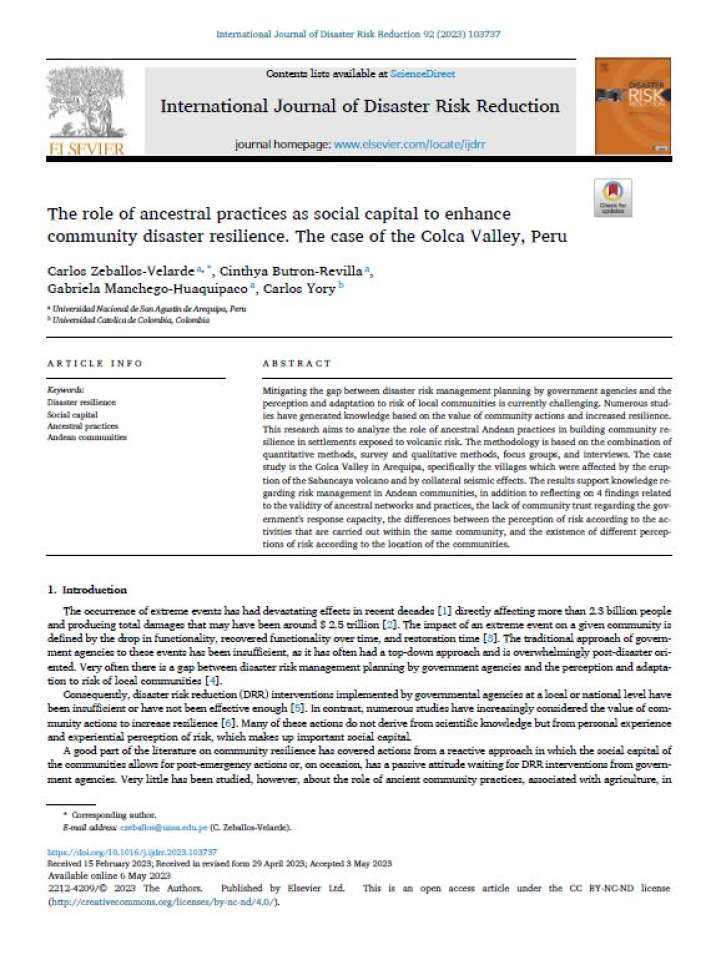The role of ancestral practices as social capital to enhance community disaster resilience. The case of the Colca Valley, Peru
This research aims to analyze the role of ancestral Andean practices in building community resilience in settlements exposed to volcanic risk. The methodology is based on the combination of quantitative methods, survey and qualitative methods, focus groups, and interviews. Mitigating the gap between disaster risk management planning by government agencies and the perception and adaptation to risk of local communities is currently challenging. Numerous studies have generated knowledge based on the value of community actions and increased resilience.
The case study is the Colca Valley in Arequipa, specifically the villages which were affected by the eruption of the Sabancaya volcano and by collateral seismic effects. The results support knowledge regarding risk management in Andean communities, in addition to reflecting on 4 findings related to the validity of ancestral networks and practices, the lack of community trust regarding the government's response capacity, the differences between the perception of risk according to the activities that are carried out within the same community, and the existence of different perceptions of risk according to the location of the communities.
Explore further

